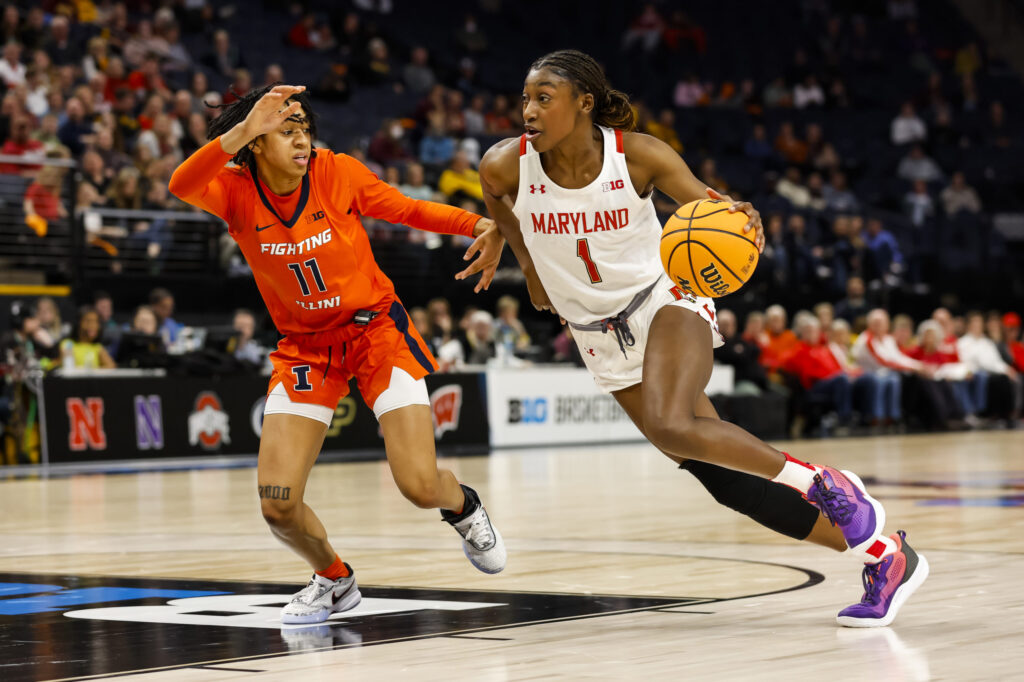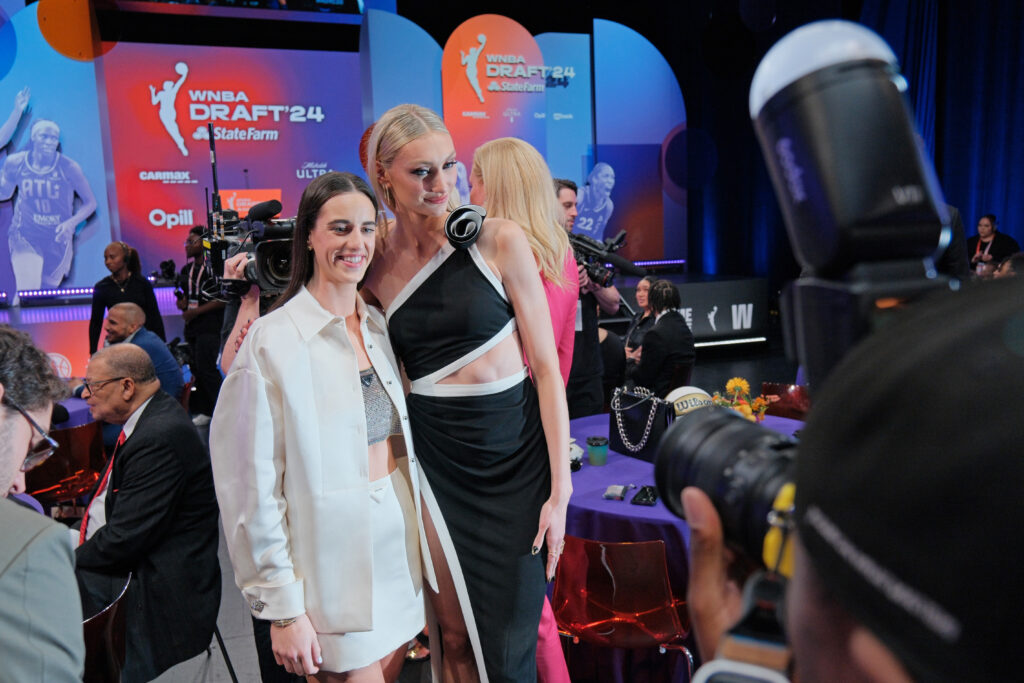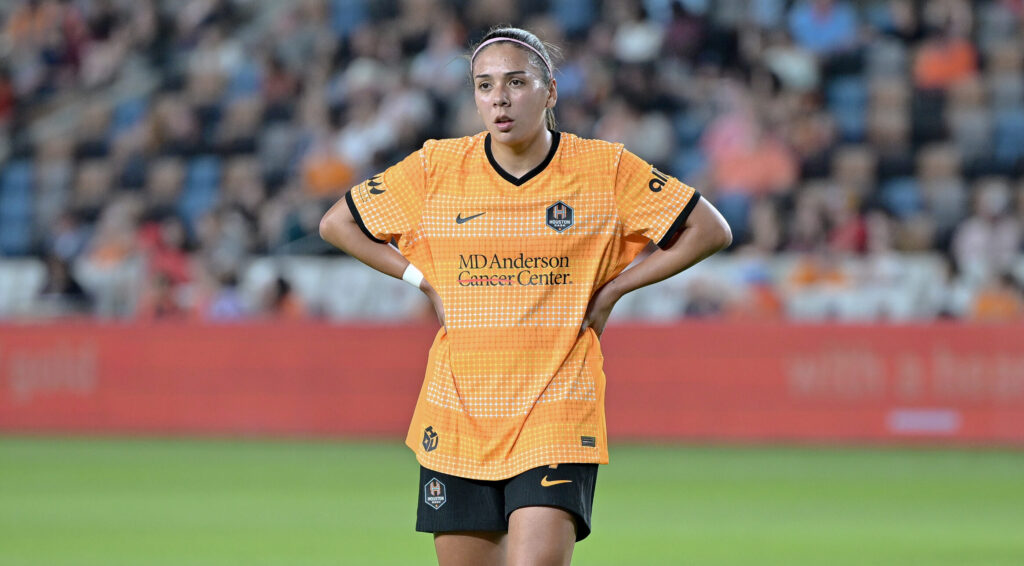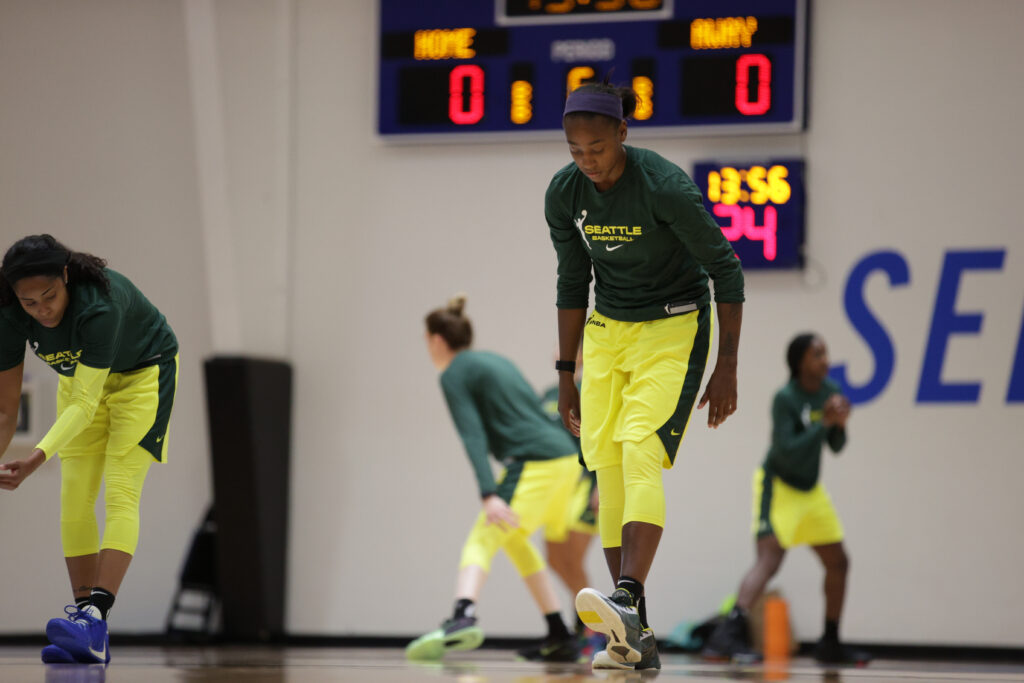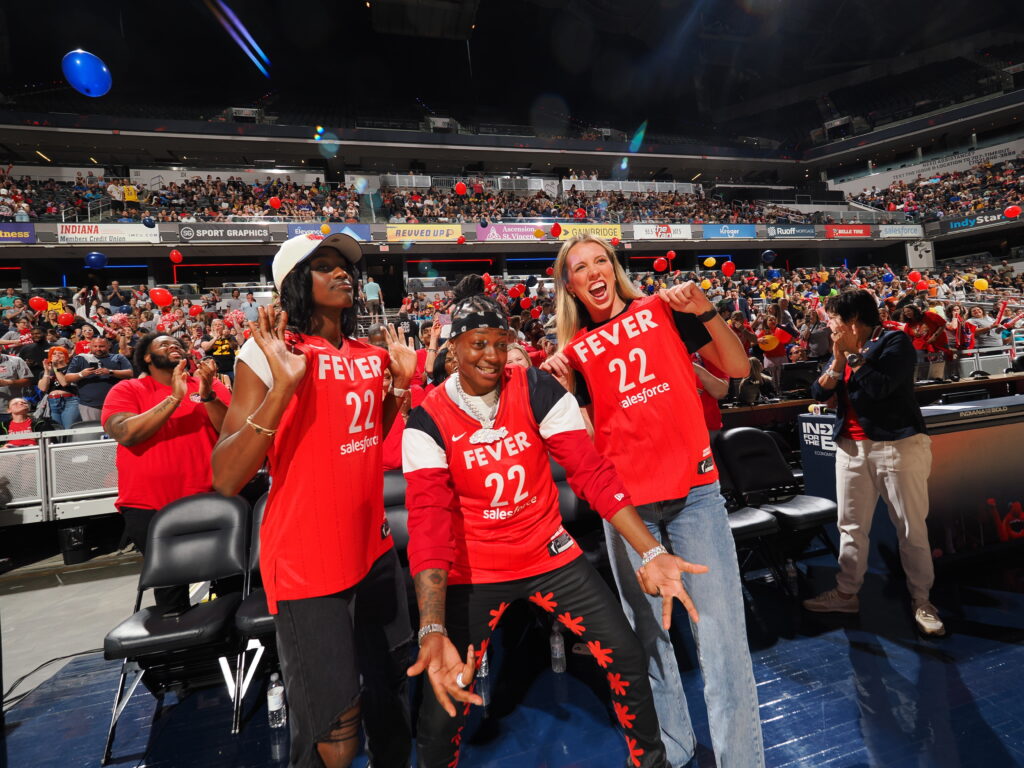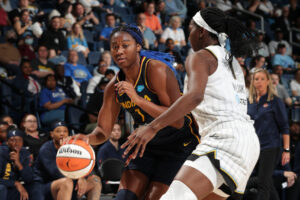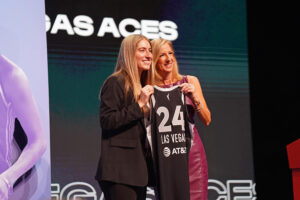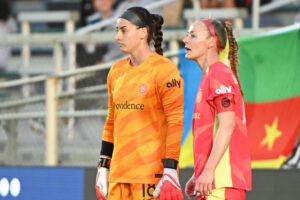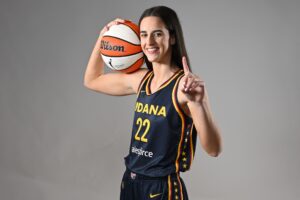With the NCAA Tournament right around the corner and the WNBA season coming into focus, it’s time to update our 2023 WNBA mock draft.
Free agency shifted the WNBA landscape in the past couple of months. The New York Liberty and Las Vegas Aces won free agency, signing multiple superstars and forming two WNBA superteams. Meanwhile, the Minnesota Lynx struck out, the Chicago Sky’s championship core broke up, and the Los Angeles Sparks stabilized their roster.
On the NCAA side, a number of top-ranked teams have dealt with injuries to key players, but there is plenty of pro-ready talent on the board for 2023. Nearly four months since our first mock draft, here are my projections for every first-round pick in April’s WNBA draft.
1. Indiana Fever
Aliyah Boston, F, South Carolina
Nothing to change here. The Fever still could use a dominant post presence to add to their repertoire of young, promising talent, and Boston is exactly that player.
While Boston’s numbers are down, the 6-foot-5 South Carolina center has conducted herself with poise, bearing the brunt of double and triple teams night in and night out. Her 13.3 points on 60 percent shooting from the field and 9.7 rebounds per game are impressive considering teams are focusing their defensive game plans on stopping her. Boston’s impact is felt just as much on defense as it is on offense, most notably in February when she helped hold LSU star forward Angel Reese to her lowest output of the season. South Carolina head coach Dawn Staley has been adamant that, despite the deflated stat lines, Boston is still “the best player in the country.”
2. Minnesota Lynx
Diamond Miller, G, Maryland
The Minnesota Lynx failed to address their center needs in free agency, making this pick even more valuable. Beyond positional needs, the Lynx are searching for talent as they enter the 2023 with nearly the same roster from the past three years but without Sylvia Fowles. This pick will propel or haunt this franchise for years to come, and they cannot afford to miss on it.
Diamond Miller arguably has the most upside of any player on the draft board. The 6-3 guard has a pro-ready build and has been dominant all season long, leading Maryland in scoring with 19.7 points per game. She can do a little bit of everything, with her ability to pass and create, score, defend and rebound. The most impressive aspect of Miller’s game is her ability to grab a rebound, advance the ball and make decisions in the open floor. She is a major threat when going downhill. Miller’s production has been consistent throughout her senior season, and she’s taken her game to another level against top-ranked opponents. While her 3-point shooting percentage is down to 21 percent this season, she is capable of perimeter range, having shot over 30 percent during her NCAA career.

3. Dallas Wings
Rickea Jackson, F, Tennessee
The Dallas Wings own the 2023 draft with the No. 3, No. 5 and No. 11 selections, giving them the opportunity to cast a wide net between shooters, combo guards and scorers. Rickea Jackson’s ceiling is sky-high given her athleticism and scoring mentality. Jackson is tough to defend off the dribble, with a quick first step and a great combination of body control and size to finish in the paint. At 6-2, she has the skill set to slide over from wing to forward and can play inside and out. Jackson is putting up the most efficient numbers of her NCAA career this season, shooting 55.2 percent from the field and leading Tennessee with 19.6 points per game. Her stock has only risen with her performances late in the season, including a 26-point double-double to lead the Vols over LSU in the SEC tournament semifinal.
Jackson could use her fifth year of NCAA eligibility next season, but if she were to declare for this year’s draft, Dallas would be hard-pressed to pass over her all-around talent and potential at No. 3.
4. Washington Mystics
Haley Jones, G, Stanford
Washington might have the chance to add versatility, shot creation and defense with one pick. Haley Jones has long been touted as a lottery selection, and if she’s still available at No. 4, the Washington Mystics should scoop her up.
Jones is a cerebral player who has a proven ability to make those around her better. The Stanford senior is in a category of her own in this draft class. She can initiate offense as a point-forward, averaging a career-best 4.1 assists per game this season, and when she gets downhill in the open floor, her decision-making is elite. On defense, she can handle any matchup handed to her.
Jones’ downside is her perimeter shooting, with the 6-1 guard having made only three 3-pointers all season and shooting under 10 percent from deep. She will need to continue to develop her range to stretch defenses at the next level.
5. Dallas Wings
Maddy Siegrist, F, Villanova
Based on the makeup of the Wings’ roster after free agency, it is evident they need to address perimeter shooting in this draft. Maddy Siegrist is not only shooting a career-best 37.3 percent from the 3-point line this season, she is also not a one-dimensional scorer.
The 6-2 guard leads the nation in scoring, with 28.9 points per game on 51.8 percent shooting from the field. Siegrist will have a pretty steep learning curve in the WNBA, especially from a physicality standpoint, but the potential for consistent production is there. She has the length, skill and size necessary to succeed at the next level and would fill a major positional gap in Dallas’ roster.

6. Atlanta Dream
Elizabeth Kitley, C, Virginia Tech
The most glaring concern for the Atlanta Dream heading into 2023 is their lack of a strong post presence, giving them a chance to stock up on talent with their two first-round picks. Elizabeth Kitley could help strengthen that position immediately with her skill and efficiency around the basket. The 6-6 center leads Virginia Tech in scoring and rebounding, averaging a double-double of 18.6 points and 10.5 rebounds per game.
The ACC Player of the Year has great length and rebounding instincts. While often pigeonholed as a traditional center, Kitley plays with a level of finesse and face-up ability that is unique to her size. She arguably is the most skilled post player in this class with her ability to play with her back to the basket, attack off the dribble, create separation with her fadeaway and execute in the high post.
While there is a chance Kitley uses her fifth year of NCAA eligibility, if she declares for the draft, she could help the Dream right away.
7. Indiana Fever
Grace Berger, G, Indiana
The Indiana Fever could go in a number of different directions with this pick. Beyond the sentiment of keeping Hoosiers star Grace Berger in state, the 6-0 guard has the “it” factor as a tough and disciplined competitor. Berger is as steady as they come at the guard spot and has elevated her play in the biggest moments this season. She is one of the most composed players in the 2023 class.
While Indiana’s roster looks a bit guard-heavy at first glance, Berger would bring a unique skill set with her mid-range efficiency and her ability to play on or off the ball and rebound from the guard spot. Berger is averaging a career-best 5.8 assists per game for Indiana this season, and while she’s not known for her 3-point shot, she’s been efficient when she’s taken them, averaging 40 percent from range. Her experience and on-court leadership would be welcome on the Fever’s young, rebuilding roster.

8. Atlanta Dream
Stephanie Soares, F/C, Iowa State
As with the Kitley selection at No. 6, the Dream have an opportunity to double down on a couple of bigs in this draft class — one with immediate potential and one for the future. Before Stephanie Soares suffered a season-ending ACL injury in early January, the 6-6 center was one of Iowa State’s best players after transferring from the NAIA, where she was the two-time league Player of the Year. WNBA teams are so high on Soares that she would likely be a lottery pick if healthy, and still could be in her current state.
Players with Soares’ skill set and size don’t come around very often. She can protect the rim with her length and athleticism while also stretching the floor with a strong 3-point shot. In just 13 games with Iowa State and at the Division I level, Soares averaged 14.4 points and 9.9 rebounds per game while shooting 54.4 percent from the field and 30.6 percent from the perimeter.
WNBA GMs expect Soares to have a long pro future ahead of her, even if she is granted a waiver for an extra year of NCAA eligibility. With Soares, Atlanta could secure a potential unicorn in this class who could continue to be developed and impact the WNBA for a long time once healthy.
9. Seattle Storm
Jordan Horston, G, Tennessee
While the Seattle Storm’s biggest need is at the point guard position, they might be better-served selecting the best player available with the ninth pick. If Jordan Horston were to fall this low, Seattle has an opportunity to lock up an elite wing with next-level potential. When Horston is at her best, she is one of the most elite players in the country. She showcased that during the SEC tournament last week, averaging 19 points and 8.7 rebounds across three games.
At 6-2, Horston has elite length and athleticism that should translate well to the next level on both ends of the floor. She can rebound the ball and elevate over opponents, and her passing ability is underrated. She is also having her most efficient scoring season for Tennessee, shooting 43.6 percent from the field. Horston has top-five pick potential, but if she were to drop to No. 9, Seattle won’t want to miss out on adding a player of her talent to its retooling roster.
10. Los Angeles Sparks
Lou Lopez Sénéchal, G/F, UConn
The Los Angeles Sparks need a scoring wing who can stretch the floor and be a perimeter threat. That only escalated when Katie Lou Samuelson announced she will miss the season due to pregnancy.
Lou Lopez Sénéchal made the jump from Fairfield to UConn this season and has thrived in the high-pressure atmosphere. She has increased her efficiency while taking four to five fewer shots per game, shooting a career-best 46.7 percent from the floor and 43 percent from the 3-point line. The 6-1 grad student has been forced to step up as UConn dealt with injuries to several key players throughout the season, and she has responded, helping the Huskies capture the Big East tournament championship this week. Lopez Sénéchal is just the type of wing Los Angeles could throw into the fire her rookie season.

11. Dallas Wings
Taylor Mikesell, G, Ohio State
Taylor Mikesell has a pro-ready frame, skill set and understanding of the game. She is at her best when she can play alongside other aggressive, shot-creating guards. And when she can run off actions and get to her spots, she is one of the most efficient shooters in the country.
Mikesell has proven extremely durable over her career, especially this season as she’s helped carry an injury-ridden Ohio State team. Despite being the focal point of opposing scouting reports every night, the 5-11 guard is shooting 41 percent from deep and can also score in other ways. She has elite vision and finishing ability at the rim. Mikesell has the tools to thrive as a pro when defenses aren’t honed in on her specifically.
12. Minnesota Lynx
Zia Cooke, G, South Carolina
Minnesota needs both depth in the backcourt and scoring. Cooke is having her best and most consistent season for South Carolina. Not only is she averaging a career-best 40.8 field-goal percentage, but she is also controlling the ball better, with the fewest turnovers of her career.
Cooke thrives in big moments, and no team has played on bigger stages than the Gamecocks in recent years. Having played under head coach Dawn Staley for four seasons, Cooke will enter the WNBA with a pro-ready mentality. With Cooke, the Lynx would get a dynamic scorer and a player capable of initiating the offense alongside Lindsay Allen, two areas Minnesota desperately needs to address.
Rachel Galligan is a basketball analyst at Just Women’s Sports. A former professional basketball player and collegiate coach, she also contributes to Winsidr. Follow Rachel on Twitter @RachGall.
